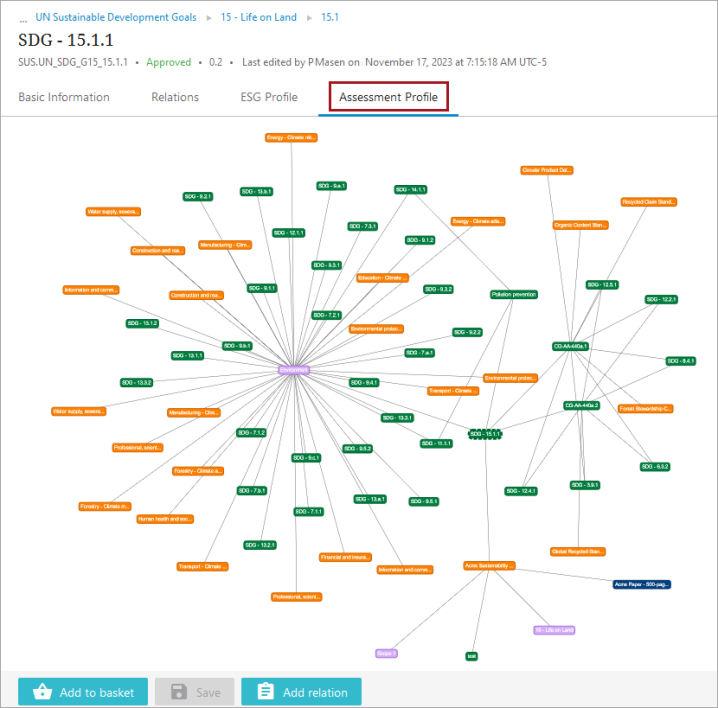To help users manage the various environmental, social and governance (ESG) frameworks relevant to their business, the Sustainability Data Management solution allows users to create and configure objects called ESG Reporting Frameworks. These frameworks enable a Sustainability Compliance Officer to organize assessors that may have multiple standards. For instance, the United Nations (U.N.) supports multiple sustainability standards, which comprise multiple disclosures. Though a given business may not seek to comply with all the U.N.’s standards, ESG Reporting Frameworks provide a structure to organize standards from a single assessor that a user must review, maintain, and enforce compliance with.
Setting up and configuring reporting frameworks is step one in setting up the Sustainability Data Management solution.
Creating ESG Reporting Frameworks
Organizing sustainability standards follows this hierarchy of object types:
ESG Reporting Framework → ESG Reporting Standard → Disclosure Category → Disclosure (or Target) → Disclosure (if a child to a Target object)
Because a single framework often has many standards, providing users with a structure built in this way allows objects at a lower level in the structure to automatically inherit attributes and values from objects at a higher level, saving users time and effort when designing their own ESG frameworks.
To create a structure that organizes sustainability standards and enables the solution to depict visually the connections between the standards, assessments, and Sustainability Data Cards (SDCs), users can start the process by clicking on ‘Sustainability Data’ in the Global Navigation Panel, then on ‘ESG Reporting Frameworks.’
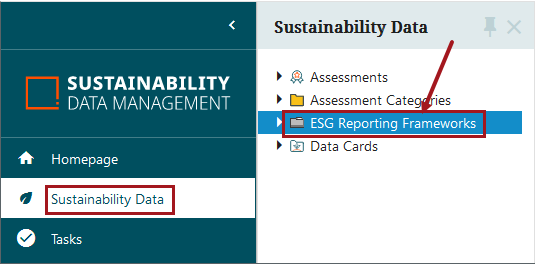
On the ‘ESG Reporting Frameworks’ screen that displays, click the ‘Create ESG reporting framework’ button at the bottom of the screen.
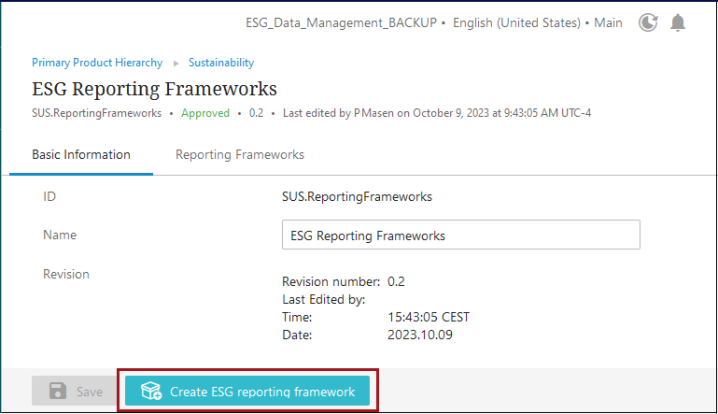
The same pattern follows for other object types in the reporting framework hierarchy: go to an object of the higher-level object type to create an instance of the object of the lower-level object type. In this way, users can build out a hierarchy of reporting frameworks and their various standards, as fits the user’s requirements.
Adding relations
On the lowest-level object, the disclosure, users can click the ‘Add relation’ button to link the disclosure to any relevant compliance object.
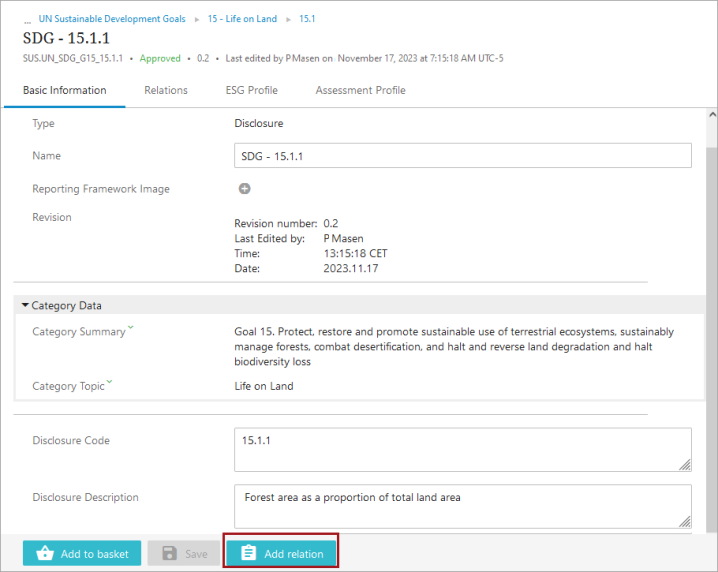
Relations are compliance objects that allow sustainability-compliant users to create a Sustainability Profile for their organization. Users can add other disclosures, targets, and assessments as relations. The ‘Add relation’ functionality establishes a ‘Related Reporting Metric’ connection from the compliance object (disclosure, target, or assessment) linked to the disclosure the ‘Add relation’ action is executed from.
Additionally, when linking a disclosure using the ‘Add relation’ functionality, a ‘Related Reporting Category’ relation is automatically established between the disclosure category and the disclosure the ‘Add relation’ action is executed from.
This new relation will show in a tabular format in the ‘Relations’ tab on the disclosure’s screen, and on the ‘ESG Profile’ tab, as a visual depiction of the disclosure’s connections to all related compliance objects.
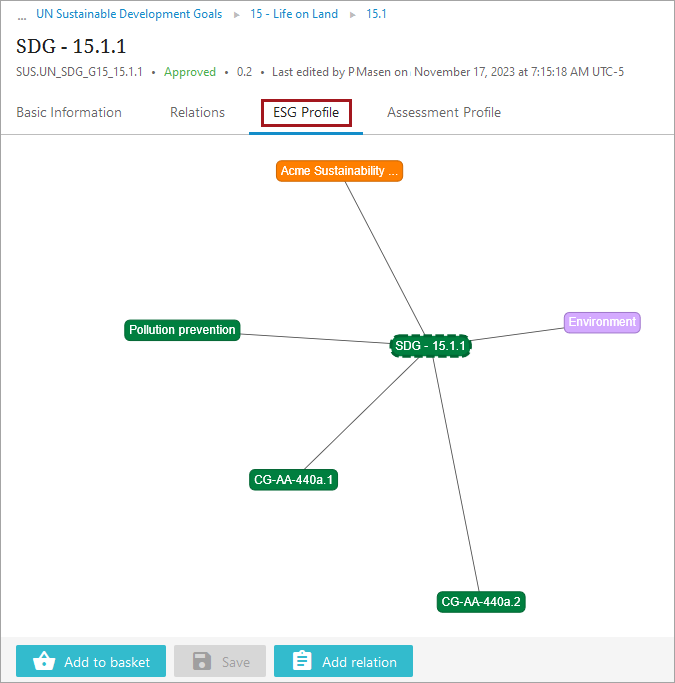
On the ‘Assessment Profile’ tab, all data cards evaluated by the linked assessments are displayed in a visual depiction of their connections to one another.
